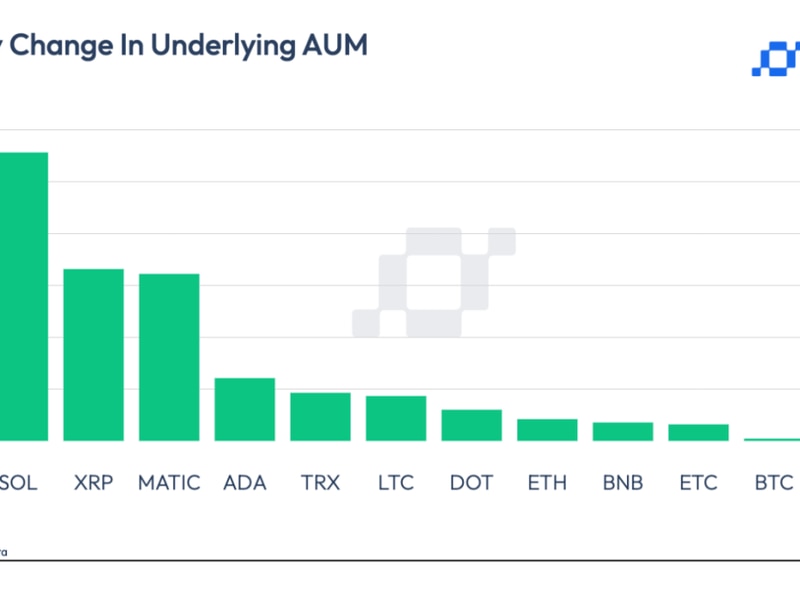Stablecoins Can Help Fix the Current Lending Market
Lending markets are evolving, transitioning from a traditional, bank-centric framework to a more diverse and technologically advanced ecosystem. This evolution is particularly evident since the Global Financial Crisis (GFC) and is fundamentally reshaping the landscape of capital aggregation and distribution.
However, the current market structure still faces considerable friction. We believe, integrating blockchain into the existing financial tech stack will improve the efficiency of capital flows and expand access.
You’re reading Crypto Long & Short, our weekly newsletter featuring insights, news and analysis for the professional investor. Sign up here to get it in your inbox every Wednesday.
Blockchain-enhanced capital distribution
The diminishing role of traditional banks in capital distribution post-GFC has paved the way for fintech lending companies like SoFi and Ramp. These firms are filling the void with innovative solutions such as buy now pay later (BNPL) options by leveraging online platforms, data analytics and machine learning.
Despite advancements, issues like archaic payment systems and SME funding gaps persist. Stablecoins can help overcome these challenges by revolutionizing fund disbursement with superior cost and speed. By leveraging stablecoins, fintechs can tap into new markets with limited access to conventional banking services, offering more accessible and efficient financial solutions at a global scale.
:format(jpg)/cloudfront-us-east-1.images.arcpublishing.com/coindesk/XTZOL75U5RGRFBDCOUHKK6CFVA.png)
The $150 trillion opportunity
Private credit has flourished post-GFC, growing to $1.6 trillion and becoming a competitive source of large scale financing. However, compared with the state of innovation in capital distribution, capital aggregation’s growth historically was hindered by its manual processes and too many intermediaries, which made onboarding large numbers of smaller ticket LPs uneconomical.
Tokenization can streamline and automate these intensive operational processes. Such efficiency brings two major advantages. Firstly, it is now more economically viable to underwrite smaller loans. Secondly, it democratizes investment opportunities, lowering barriers to entry for a broader spectrum of lenders, including those with smaller capital contributions often overlooked today. Other benefits include improved transparency, secondary liquidity, and simplified risk customization enabled by the programmability of smart contracts.
According to recent research by Bain & Co, alternative investments are underrepresented in individuals’ portfolios (individuals own 50% of global wealth but only 5% allocated to alternatives, while public pensions allocate about 25% to the same asset class). And while disparate liquidity demands and the highly manual nature of the alternative fund industry are barriers, Bain presents a clear case that tokenization can help the private markets industry tap into the $150 trillion individual investor segment, “unlocking.. potentially $400 billion in additional annual revenue for the alternatives industry.”
Outlook for blockchain-based credit ecosystem
-
Expand the role of stablecoins in capital distribution: In 2023, companies like
Visa, Mastercard, and Checkout.com
integrated stablecoins with various applications. In 2024, we anticipate a broader adoption in global payments, encouraged by increasing regulatory clarity in jurisdictions such as
Hong Kong
and the
UK
. A key development in this area is stablecoin-based lending services. These services are expected to be particularly impactful in regions where traditional bank financing is inefficient or scarce.
-
Tokenization in alternative asset funds: Over the past year, pioneers like
Hamilton Lane
and
KKR
adopted tokenization strategies to attract individual investors by reducing costs and lowering minimum subscription amounts. Looking ahead to 2024, we expect more private credit funds to explore the advantages of tokenization and optimize capital aggregation using blockchain technology while
private credit lending solutions on DeFi
continue to grow, addressing financing gaps in the real economy.
In conclusion, blockchain technology, through innovations like stablecoins and tokenization, is pivotal in advancing efficiency and access to capital markets.
Edited by Benjamin Schiller.









